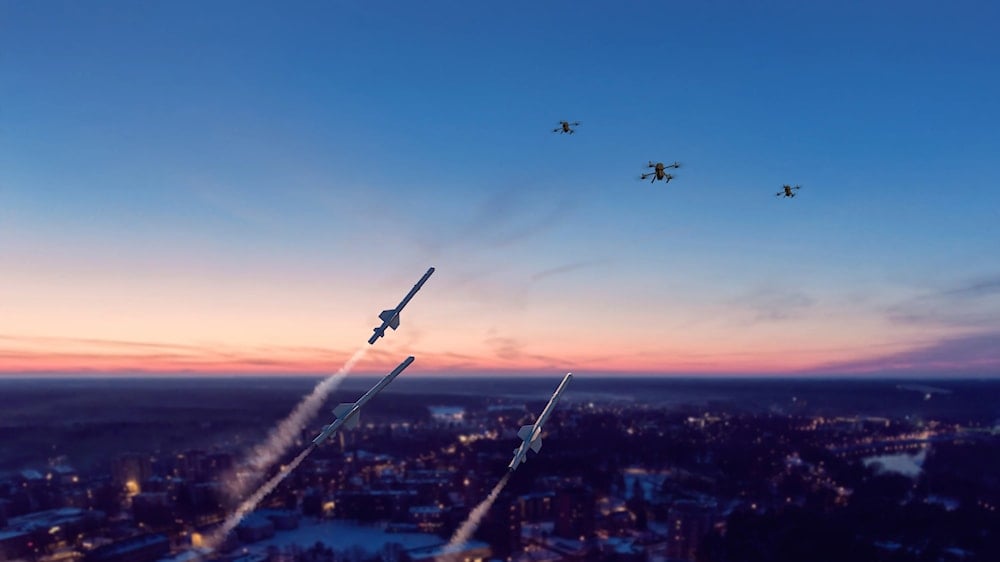Sweden's Saab to deliver first anti-drone missile in 2026
Sweden's Saab AB introduces the Nimbrix anti-drone missile system, featuring air-burst warheads and a 5-km range, as drone warfare reshapes modern battlefields.
-

A 3D Presentation of the Saab Nimbrix missiles flying towards drones (Saab AB)
Swedish defense manufacturer Saab AB is developing its first dedicated missile to counter the increasing threat of aerial drones, aiming to make its first deliveries in 2026.
According to a Thursday statement, the group’s Nimbrix missile system, which will have a range of as much as 5 kilometers (3.1 miles) and be equipped with an active seeker to track its target, as well as a warhead capable of engaging aerial drone swarms using an air-burst mode.
The development of this new product is being driven by the fact that low-cost unmanned drones have become a crucial component of modern warfare, as seen in conflicts like Russia's operations in Ukraine, which has consequently prompted nations to race toward creating inexpensive countermeasures.
Stefan Oberg, who runs the business unit Missile Systems, stated that Saab’s new system is cost-effective, a critical feature given the proliferation of unmanned aerial systems on the battlefield, and the company added that it was in talks with potential customers without providing further details.
Drone warfare transforms the battlefield
The rise of drones to dominance in recent years has transformed modern warfare, forcing militaries to shift their strategies due to the effectiveness and cost-efficiency of unmanned aerial threats.
Influenced by the war in Ukraine, the US Army is undergoing its most significant post-Cold War transformation, The Wall Street Journal reported in May. This initiative, developed through over a year of testing, aims to equip each combat division with roughly 1,000 drones for surveillance, logistics, and offensive missions while phasing out outdated equipment.
Also in May, The Times cited a UK government source saying that the United Kingdom is preparing to shift its overall defense strategy through a new "20-40-40" formula with a strong emphasis on drone warfare.
The proposed 20-40-40 formula divides combat capability into three distinct components, with the initial 20% consisting of tanks and other heavy armored vehicles that are expected to be stationed furthest from the frontline to serve as a strategic reserve and provide operational depth.
The middle 40% will feature kamikaze drones and other "single-use" remote-controlled weapons systems that are designed to operate without direct human presence, allowing for high-impact strikes while minimizing personnel risk.
In the first half of 2025, Taiwanese drone experts skyrocketed 749% in the first half of 2025, according to data obtained by the Island's Central News Agency (CNA), with the bulk of these exports heading to Poland.
The total value of exported UAVs, which reached $11.89 million and was up from just $1.4 million the previous year, saw Poland alone account for $6.48 million of that total, while the United States, Germany, and the Czech Republic followed with substantial purchases.

 3 Min Read
3 Min Read








